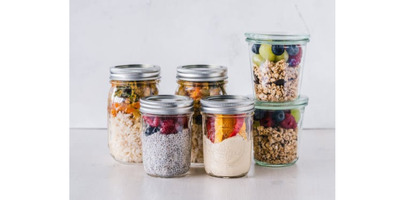How To Pair Different Flavors According Like A Pro
How To Pair Different Flavors According Like A Pro
When it comes to pairing different flavors together, many people think that it’s all about trial and error. But, with a bit of know-how, you can create flavor combinations that are truly amazing. Here’s how to pair different flavors together like a pro.
Start by thinking about complementary flavors
In pairing flavors, one thing that many people overlook is that there are very few ‘true’ flavors. In the industry, many of the flavors we know and love have been tweaked to work better in certain recipes or with other ingredients. Instead of thinking about how a cucumber tastes to you normally, think about how a pickle might change the flavor. This makes it much easier to pair different flavors together because they complement each other instead of compete for attention. You can use this link to see the menus of different restaurants and get inspired from it. Getting the right flavor combinations is a great way to make your dishes stand out. Ingredients typically fall into certain flavor categories such as sweet, salty, spicy and sour. By thinking about which flavors compliments or contrasts one another when cooking, you can create amazing results with relatively little effort.
Think about contrasting flavors
When pairing different foods together, it can be tempting to go for something that compliments another flavor profile in your dish well enough. However, sometimes contrast is created intentionally to add an extra dimension of flavor. A great example of this is in Mexican cuisine, where the sweetness of a dish is often balanced out by a sour or acidic component, such as lime juice. While complementary flavors work together well and can be very harmonious, contrasting flavors can be exciting and create an interesting flavor profile. If you’re looking for something new to try, why not experiment with some contrasting flavors in your next dish?
Use herbs and spices to enhance flavors
One way to really elevate the flavors in your dish is to use herbs and spices. Not only do they add flavor, but they can also help to round out a dish, making it more complex and intriguing. When using herbs and spices, it’s important to think about what flavors you want to highlight. For example, if you have a dish with a strong flavor profile, such as Thai green curry, you might want to use spices like cumin or coriander to enhance those flavors. On the other hand, if you have a dish that is relatively bland, you might want to use more powerful spices, such as cayenne pepper or black pepper. By using herbs and spices in the right way, you can transform an ordinary dish into something truly special.
Experiment with different combinations
One of the best ways to get better at pairing flavors together is to experiment. Try lots of different combinations and don’t be afraid if things go wrong as often as they go right. This can be a great way to turn an ordinary dish into something truly special, so don’t limit yourself! It can also be a lot of fun to experiment with the flavors that you have at home, using them in new ways. For example, if you have lemons but want a creamy dessert, then why not try making a key lime pie? Some of the most popular desserts around are made from ingredients that might not immediately seem like they would work together. This is because the best combinations are those that you wouldn’t expect!
Pay attention to the texture of ingredients
When pairing flavors, it’s also important to think about the texture of your ingredients. If you’re pairing a chocolate dessert with raspberry sauce, make sure that the texture of the combined flavors is right. If the sauce has been made from fresh raspberries, then it will have a crunchy texture when combined with chocolate that isn’t smooth and creamy. In contrast, a chocolate mousse or pudding would be perfectly paired with an equally smooth raspberry sauce to create a harmonious flavor combination. Paying attention to how different textures complement each other can help you to get more out of your dishes, no matter what types of food you’re making.
Don't be afraid to experiment in your day-to-day cooking
One of the best ways to get better at pairing flavors together is by practicing. And what better way to practice than by trying new things in your everyday cooking? If you’re not used to cooking with a certain flavor, then this is a great opportunity to experiment. You might be surprised at how well certain flavors work together, even if they don’t seem like they would at first. Plus, there’s no harm in making a mistake — after all, that’s how you learn! So go ahead and try something new in your next meal. You may not cook five-star meals every single day, but trying to expand the flavor of simple morning eggs or lunch can still be a lot of fun.
Be adventurous when you're eating out
Another great way to experiment with flavors is by trying different dishes in restaurants, or even at home for that matter! If you’re unsure what certain ingredients taste like or how they might fit together, then try ordering a curry or other dish that has lots of complex flavors and contrasting textures. Not only will this help you to understand how complementary flavors work together, but it can also be an extremely fun experience. And if you don’t like one dish, then just remember that there are many more options on the menu, so you won’t have to eat it!
Don't forget to use your sense of smell!
Last but not least, it’s important not to forget about your sense of smell when pairing flavors together. Smell is one of the most powerful tools that humans have at their disposal, after all. If you think that something tastes “off” or doesn’t seem to work with another flavor, then try smelling them both again. This can sometimes make it easier for you to see where the problem lies and how you might fix it. Always remember that there are many factors involved in pairing different flavors together, so it won’t always be easy — even if they do look great together on paper!
So, there you have it — a few tips to help you pair different flavors together like a pro. By following these guidelines, you’ll be able to create harmonious and delicious flavor combinations that will wow your taste buds. Just remember to be patient, experiment, and have fun! After all, cooking is supposed to be enjoyable for everyone involved.
More Food and Drinks

Online Reviews and The Food and Beverage Industry
Satisfying your food and beverage needs has never been easier, as there are so many webshops providing these services in Canada.

Food Delivery Services: What to Look Out For
One crucial aspect of food is its delivery. With tons of food delivery services online, it's essential to read online reviews before making a choice.

Restaurants and the importance of Online Reviews
Regardless of what restaurant you decide to eat at, online reviews are shaping the industry nowadays.

What You Probably Didn't Know About Wine and Beer
With numerous wine and beer companies available, online reviews greatly influence consumers' purchasing decisions.

How the Canadian food is evolving?
Each year sees a new food trend gets embraced by chefs and the population at large. Many people interviewed in Canada stated they prefer a more environmentally friendly and sustainable diet that promotes healthy living and sustainability.